22 Gramíneas Ornamentales para Jardín - Mejores Hierbas Decorativas
Las hierbas ornamentales son plantas muy universales, perfectas para cualquier jardín. La mayoría de ellas no tienen requisitos especiales, crecen rápidamente e incluso florecen. Los jardines de césped son cada vez más populares en los últimos tiempos. ¿Le gustaría tener algo parecido en su jardín? Descubra las hierbas ornamentales más interesantes e inusuales.
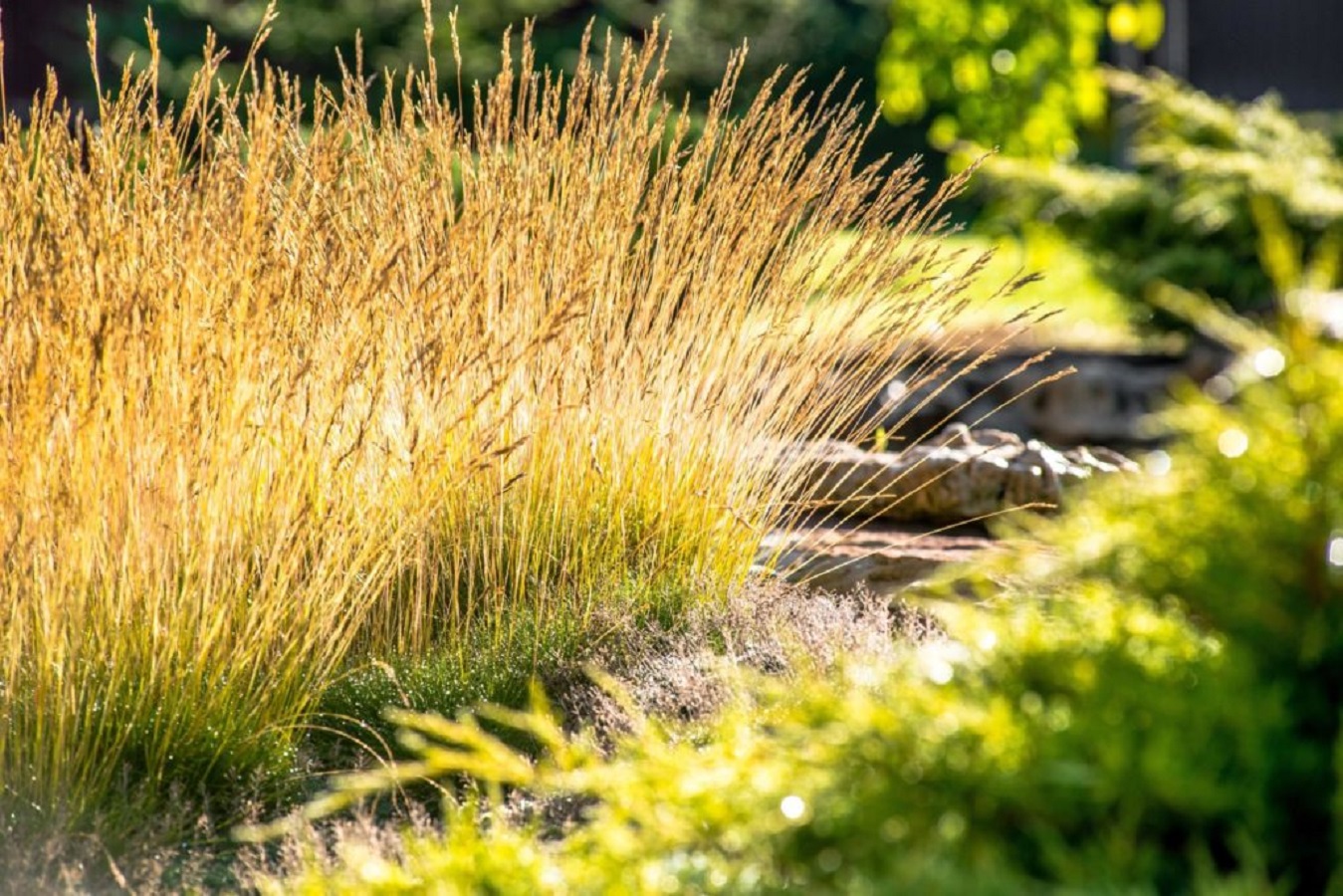
¿Es una buena idea poner céspedes ornamentales en el jardín?
Las hierbas ornamentales son una solución perfecta para quienes quieren que su jardín tenga un buen aspecto, pero no tienen suficiente tiempo o no les gusta cuidar de las plantas. Las hierbas decorativas son fáciles de mantener, lo que constituye su mayor ventaja. Incluso si se olvida de cuidarlas durante algún tiempo, conservarán su aspecto visual.
Además, muchas hierbas ornamentales lucen hermosas en el jardín durante todo el año. Algunas de ellas florecen, pero las variedades que no florecen siguen teniendo un aspecto estupendo sin flores.
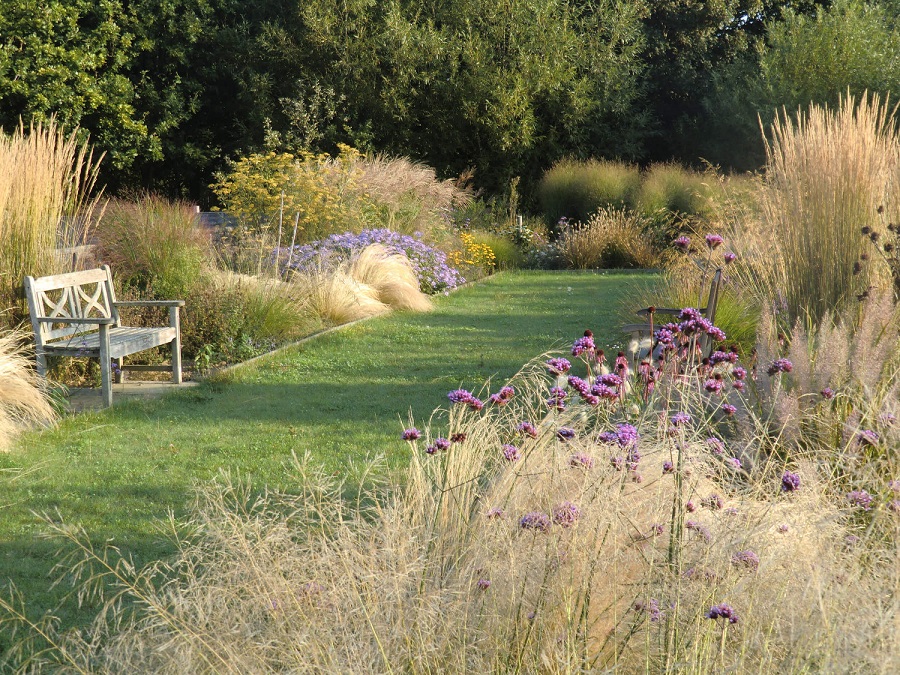
¿Cuándo plantar gramíneas ornamentales en el jardín?
El momento de plantar hierbas ornamentales en el jardín depende de la especie que elija. No obstante, la primavera es el mejor momento típico para plantar cualquier planta. Gracias a ello, tienen la oportunidad de arraigar antes del periodo vegetativo, y desarrollar una inmunidad adecuada antes del otoño y el invierno, cuando las temperaturas son más bajas.
Céspedes ornamentales - plántulas y disponibilidad
Las plántulas de hierbas decorativas utilizadas en jardinería suelen estar disponibles en cualquier tienda de jardinería. A veces, incluso se pueden encontrar en los supermercados. También puedes comprar semillas de hierbas ornamentales en lugar de comprar plántulas. Son igual de accesibles, aunque Internet ofrece más especies interesantes. Algunas hierbas ornamentales poco habituales pueden encontrarse en Internet, mientras que no están disponibles en las tiendas físicas.
¿Cómo combinar las gramíneas ornamentales?
Las gramíneas ornamentales pueden combinarse básicamente con cualquier planta. Quedan perfectas con flores pequeñas y grandes. Las plantas perennes quedan especialmente bien cuando están rodeadas de ellas. En este caso, las gramíneas ornamentales pueden actuar como un delicado complemento o convertirse en una parte más importante del arreglo.

Céspedes ornamentales resistentes a la sequía
Los céspedes ornamentales que soportan largos periodos de sequía son una opción perfecta para quienes desean minimizar el trabajo en su jardín. Gracias a ello, si no hay precipitaciones durante un largo periodo de tiempo en verano, no tendrá que regar las plantas. La selección de céspedes ornamentales es bastante amplia en este sentido. Conozca algunas de ellas.
Reedgrass (hierba de caña) (Calamagrostis)
La hierba de caña es una de las hierbas ornamentales de aspecto más natural** - parece casi salvaje cuando se planta en el jardín. Se puede utilizar en muchos arreglos - las muchas variedades de esta planta le dan muchas opciones. A veces, esta hierba decorativa se confunde con la hierba de la pampa - aunque no son lo mismo.
A las hierbas de caña les encanta crecer al sol o una ligera sombra. Estas hierbas ornamentales también necesitan un suelo fértil con una adición de humus. No les gusta el exceso de humedad. Si se las riega en exceso, son más propensas a diversas enfermedades, por ejemplo, los hongos.

Hierba del amor (Eragrostis)
La hierba del amor (Eragrostis spectabilis) es una planta hermosa pero rara. Suelen tenerla los jardineros de toda la vida que han conseguido hacerse con ella mientras coleccionaban diversas especies. Esta hierba decorativa se caracteriza por su aspecto inusual:
- flores pequeñas pero densamente acumuladas,
- hojas con extremos afilados,
- una forma amplia.
La hierba del amor no tiene necesidades especiales en cuanto al suelo. Pero hay que asegurarse de proporcionarle suficiente luz solar. La planta no debe ser bloqueada por otras plantas, arbustos ornamentales o árboles.

Hierba azul de lyme (Leymus arenarius)
La hierba azul de lyme es una hierba ornamental que suele aparecer en las zonas costeras. Curiosamente, crece allí de forma natural. Lo que no significa que no pueda tenerla en su jardín.
La hierba azul de lyme necesita un suelo arenoso parcialmente permeable. El suelo no tiene que ser fértil ni húmedo. A la planta le encanta crecer a pleno sol. Además, esta hierba ornamental es resistente a las heladas.

Semilla de la gota (Sporobolus)
La semilla de gota es una hierba ornamental alta poco habitual. En condiciones adecuadas, puede crecer hasta 3 metros de altura. Resulta que hay más de 200 variedades diferentes de este tipo de hierbas decorativas. Gracias a ello, uno puede encontrar fácilmente una planta de este tipo adecuada para su jardín, sobre todo porque también difieren en su aspecto.
Eche un vistazo a las variedades más populares:
- Sporobolus virginicus
- Sporobolus anglicus
- Sporobolus heterolepis
- Sporobolus wrightii
Un sitio soleado es el elemento básico para cultivar este tipo de césped decorativo. El suelo no tiene por qué ser fértil; el terreno puede ser arenoso o rocoso. También es importante una humedad moderada.
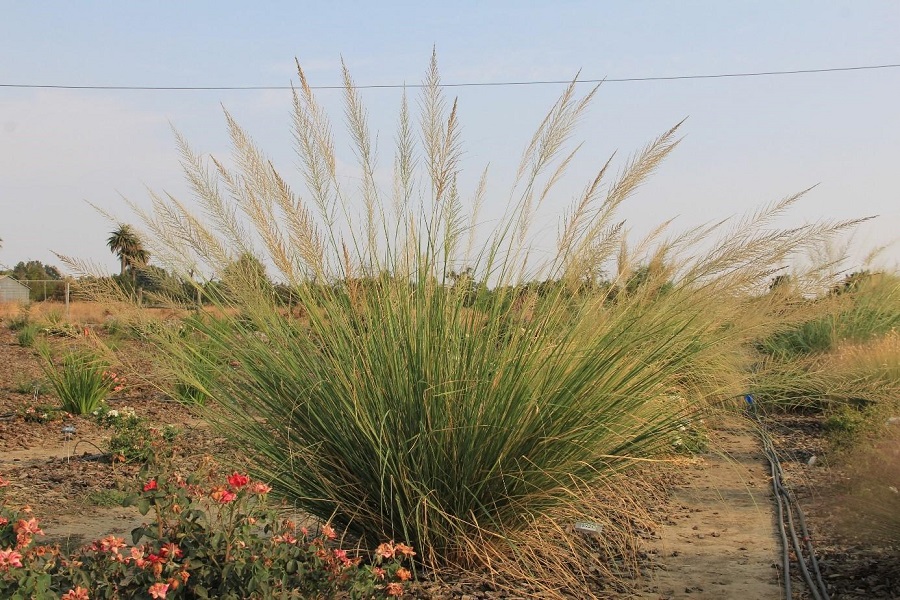
Céspedes ornamentales de bajo crecimiento
Las hierbas ornamentales de bajo crecimiento son un grupo de plantas muy popular. Son perfectas para jardines pequeños, donde la claridad es tan importante como el aspecto decorativo. Hay muchas gramíneas ornamentales cortas de aspecto único, perfectas para cualquier jardín. Eche un vistazo a algunas de ellas.
Hierba temblando (Briza media)
La hierba tembladera es una planta increíblemente baja - normalmente, no crece más de 30-50 cm. Crece mejor en lugares soleados. El suelo debe ser rico en humus, aunque no tiene por qué ser muy fértil.
La hierba de los temblores tiene ciertos usos universales. Mucha gente la seca y la utiliza en ramos de flores. En algunas regiones, esta hierba ornamental es también un ingrediente adicional de los alimentos para animales.
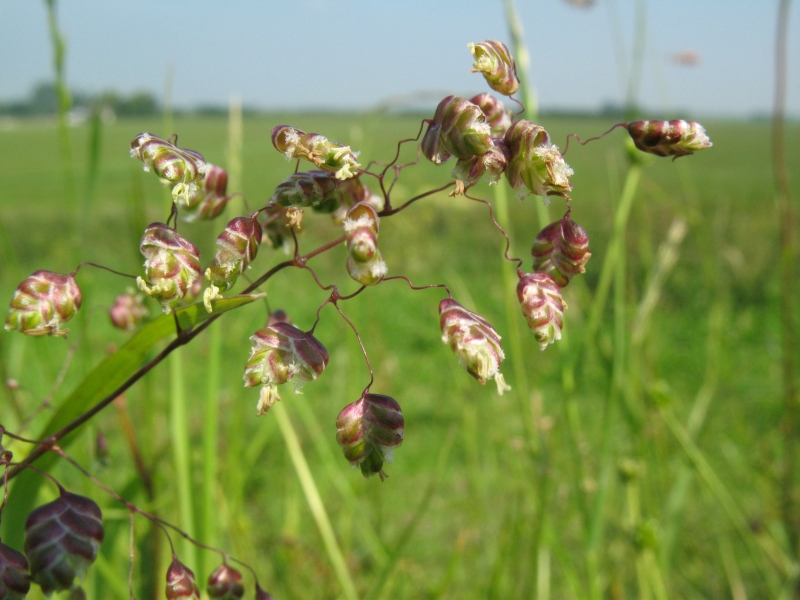
Festuca azul (Festuca glauca)
La festuca azul es una hierba ornamental de bajo crecimiento que suele aparecer como un encantador complemento en los jardines de rocas. El color único de esta planta queda muy bien cuando se combina con varias flores, pero hay que asegurarse de que no sean demasiado altas. Esto es especialmente importante, porque esta hierba decorativa no crece más de 20-25 cm.
El suelo para una festuca azul debe estar seco, y el lugar debe ser soleado. La hierba ornamental es resistente a diversas condiciones climáticas - incluso a las bajas temperaturas. Para garantizar su bonito aspecto, se puede recortar de vez en cuando.

Juncia dorada (Carex aurea)
La juncia dorada crece en pequeños racimos que sorprenden por su color verde amarillento y constituyen una impresionante decoración de jardín. Aunque no es alta, crece más que otras hierbas ornamentales de bajo crecimiento. Dependiendo de las condiciones, puede alcanzar hasta 60 centímetros.
A la juncia dorada le gusta crecer en sombra media. El suelo fértil es un aspecto importante para esta planta. El suelo también debe estar constantemente húmedo, de ahí que sea una hierba decorativa muy popular plantada junto a estanques y lagunas.
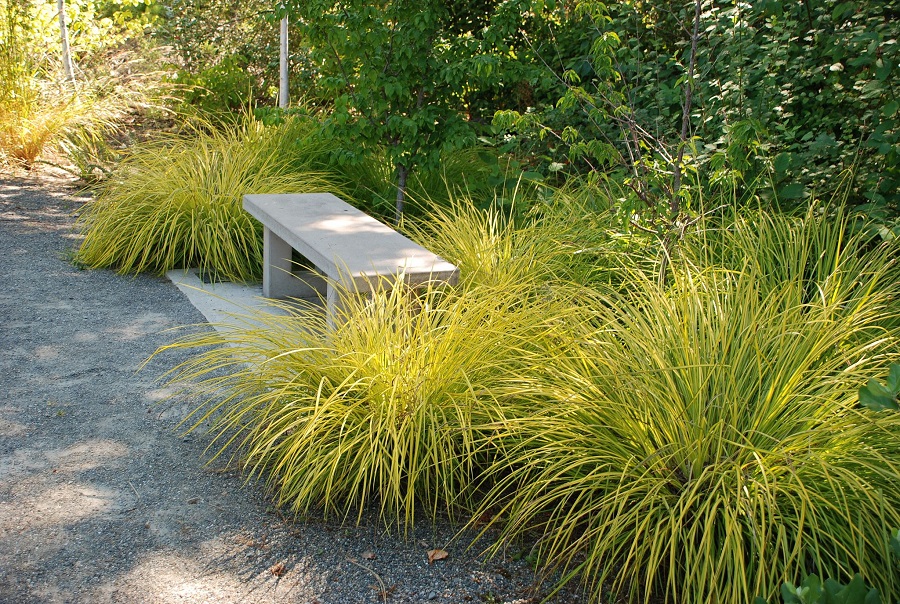
Hierba Albovariegatus (Holcus mollis)
La Hierba Albovariegatus es una hierba ornamental de crecimiento excepcionalmente bajo. Su altura no suele superar los 20 cm. Por esta razón, es una planta complementaria perfecta para los jardines pequeños. Además, es bastante fácil de cuidar. Le gusta crecer a pleno sol y a media sombra. El suelo debe estar moderadamente húmedo, pero una sequedad temporal tampoco es un problema.

Céspedes ornamentales altos
Los céspedes ornamentales altos son una solución perfecta para los jardines grandes. Son hierbas perfectas para el paisajismo, cuando se quiere arreglar un área extensa, pero no se tiene tiempo para cuidar las plantas. Las hierbas ornamentales de esta categoría tienen diferentes requisitos, dependiendo de la especie. Compruebe cuáles son las mejores para usted.
Pasto varilla (Panicum virgatum)
El Pasto varilla es una hierba ornamental que ofrece colores impresionantes. Sus terminaciones cambian de tonalidad y se vuelven rojas o incluso moradas. El Switchgrass es una hierba ornamental que florece - la temporada de floración suele ser entre julio y el final del invierno.
Las hierbas decorativas como el pasto varilla necesitan un suelo constantemente húmedo y fértil. No obstante, pueden soportar condiciones peores durante un corto periodo de tiempo, sin perder la estética. Lo más importante es que el switchgrass debe plantarse a pleno sol.

Muhilis (Muhlenbergia capillaris)
El muhly (Muhlenbergia capillaris) es una hierba rosa muy popular. Algunos la llaman simplemente hierba muhly, y es una de las hierbas rosas más populares. Es alta, aunque nunca supera los 70-80 cm. Esta hierba ornamental es vulnerable al viento fuerte, así que asegúrese de plantarla en un lugar al menos parcialmente protegido. El suelo debe estar ligeramente húmedo, y no tiene por qué ser fértil. La planta es resistente a las heladas.
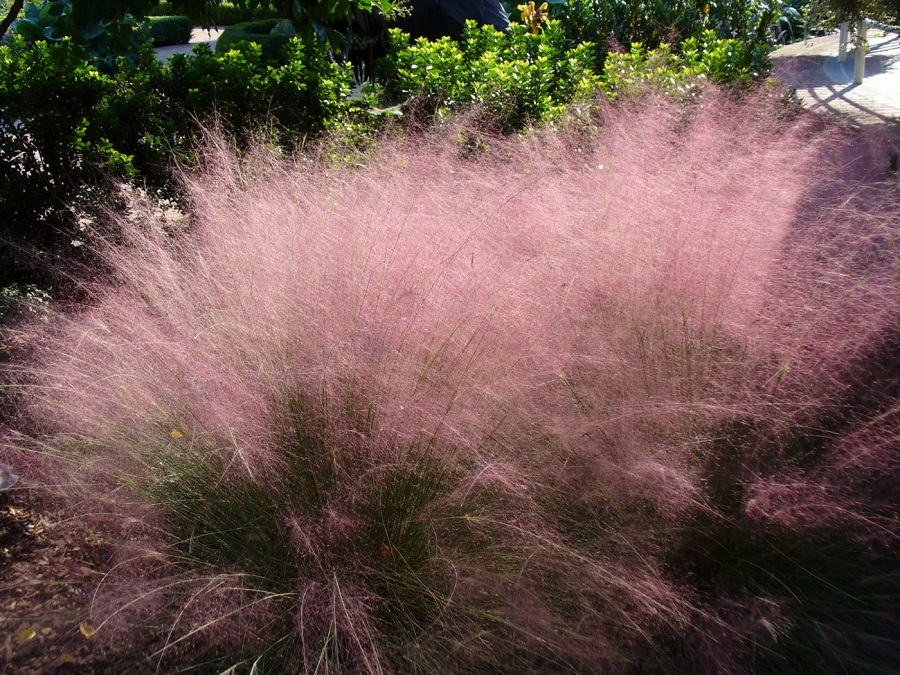
Césped de fuente cola de zorro (Pennisetum alopecuroides)
La hierba de cola de zorro es una de las especies más difíciles de las hierbas ornamentales. El suelo para esta planta tiene que ser muy fértil, permeable y moderadamente húmedo. El lugar debe ser soleado - nada puede darle sombra, de lo contrario, el desarrollo de la planta podría verse obstaculizado.
El nombre de esta hierba ornamental no es una coincidencia. Su floración se asemeja a las mullidas colas de zorro que crecen sobre largos tallos. Gracias a ello, la hierba de fuente cola de zorro constituye una original decoración de jardín.
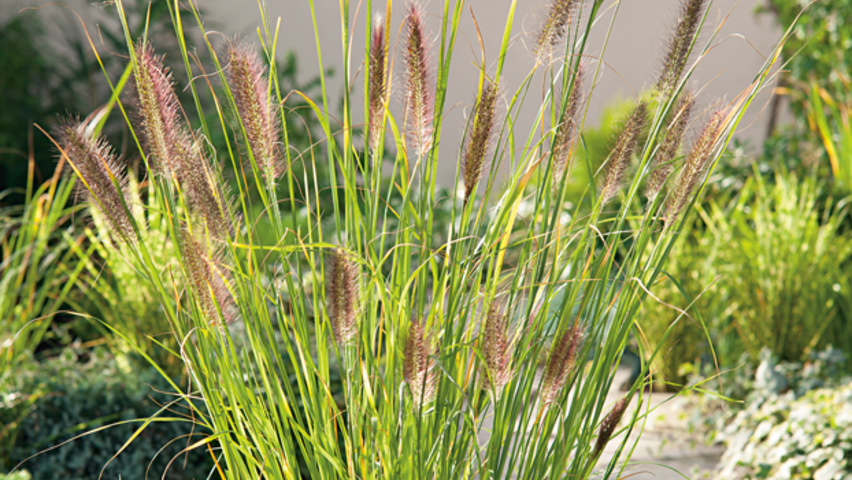
Hierba de los pelos (Deschampsia cespitosa)
La hierba de pelo moñudo, para variar, es una de las hierbas ornamentales más fáciles. Aunque crece mejor, alcanzando el tamaño más alto, cuando se planta a pleno sol, también puede utilizarse en lugares sombreados. El único requisito es un suelo húmedo.
El aspecto de esta planta es especialmente destacable. Las grandes y brillantes flores parecen nubes desde lejos. El periodo de floración se sitúa entre junio y julio, pero desgraciadamente no dura mucho.
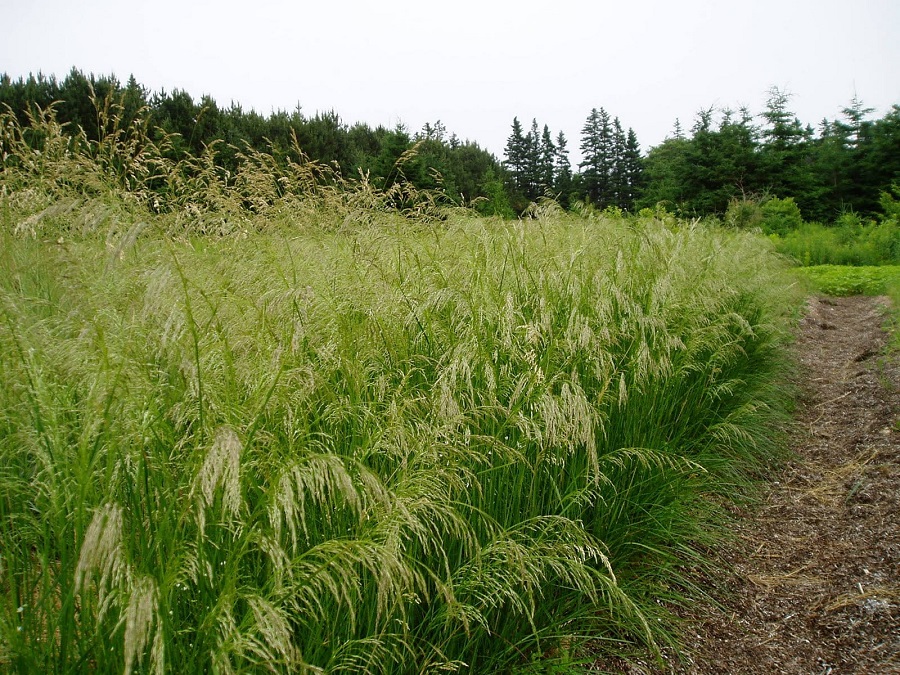
Cortaderia (Cortaderia selloana)
Cortaderia es una de las hierbas ornamentales más populares, y tiene muchos usos. Tenga en cuenta que pocos la conocen por este mismo nombre. La planta se conoce comúnmente como hierba de la pampa.
Estas hierbas decorativas altas requieren un suelo muy fértil, mejor si es rico en humus. El suelo debe estar moderadamente húmedo. Puede contar con el mejor desarrollo si planta las cortaderias en un lugar soleado.
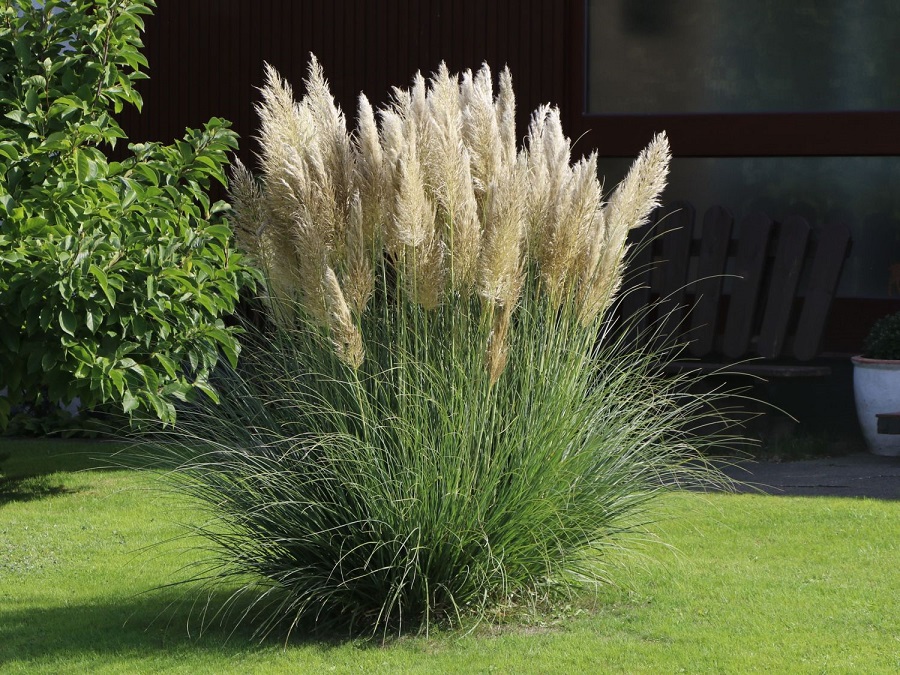
Hierba elefante (Arundo donax)
La hierba elefante es una de las hierbas ornamentales más altas que se cultivan en los jardines. Puede crecer hasta 2 metros de altura. Es fácil de cultivar, aunque necesita un suelo fértil y húmedo. Este tipo de hierba crece mejor a pleno sol. Pero el lugar no debe estar en un espacio abierto, ya que el viento podría romperla o tumbarla.
La hierba elefante florece a veces. Pero es algo raro, así que no esperes que ocurra.
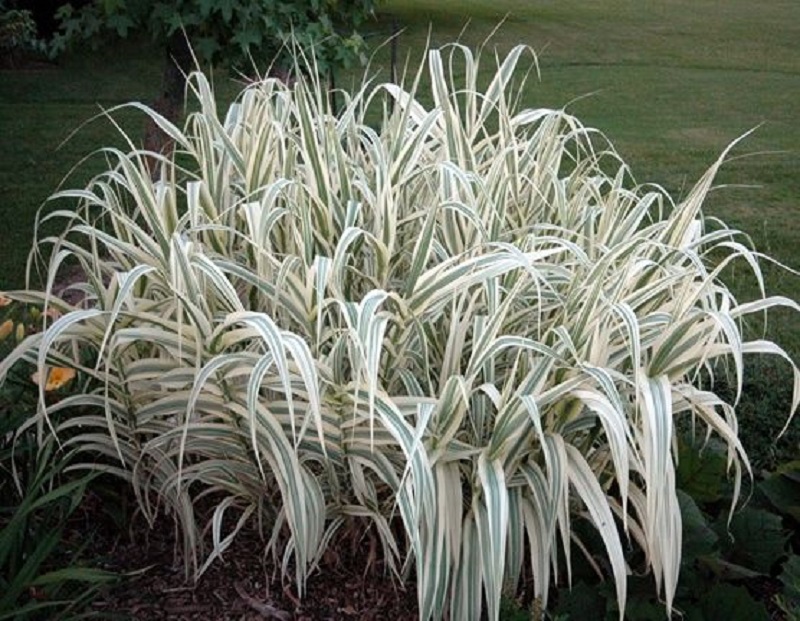
Enea lacustre (Schoenoplectus lacustris)
En la naturaleza, la enea lacustre crece en zonas pantanosas y junto a embalses. También se le conoce como enredadera común. Puede alcanzar alturas impresionantes, incluso de 3 a 4 metros. También puedes cultivarla fácilmente en tu jardín. Recuerda las condiciones adecuadas. El lugar debe estar en ligera sombra y el suelo debe ser una mezcla de arena y arcilla.
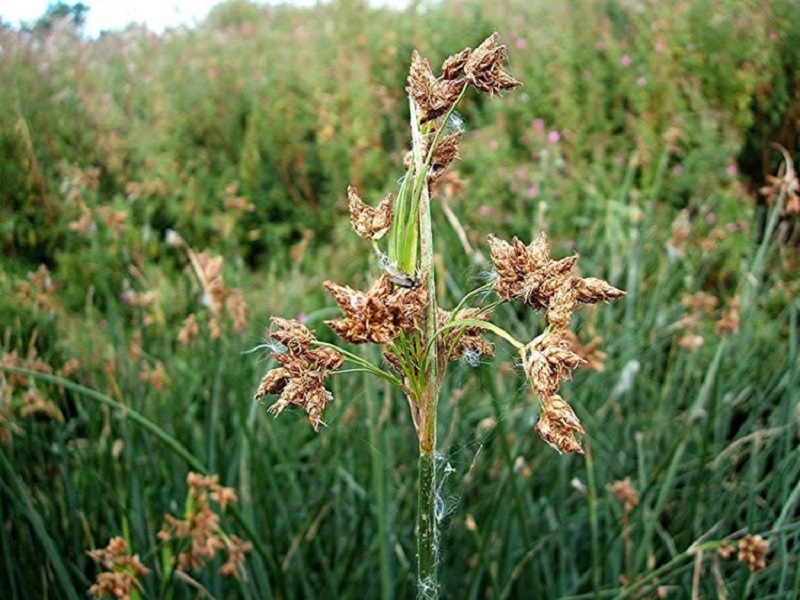
Hierba mélica siberiana (Melica altissima “Atropurpurea”)
La hierba mélica siberiana, al igual que muchas otras hierbas decorativas, adora crecer a pleno sol o a media sombra. Asegúrese de plantarla en un suelo arenoso y moderadamente húmedo. La planta no tiene un gran valor decorativo, aunque muchos jardineros la aprecian por sus flores moradas.
La hierba melífera siberiana se utiliza a menudo en interiores, en su forma seca. Puede formar parte de arreglos ornamentales.

Cebada de cola de zorro (Hordeum jubatum)
La cebada cola de zorro es una hierba ornamental muy popular y conocida en todo el mundo. Crece hasta 60 centímetros, formando unos característicos racimos anchos y gruesos. Este tipo de cebada prefiere un suelo fértil. El suelo debe estar siempre húmedo. Incluso una breve sequía puede afectar al aspecto de esta planta.
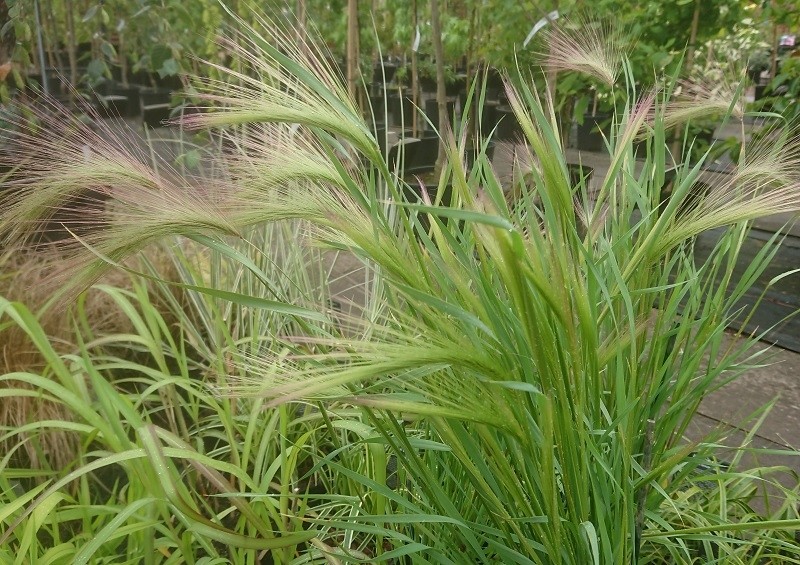
Céspedes ornamentales para la sombra
Aunque la mayoría de las hierbas ornamentales adoran los lugares soleados, también hay tipos que crecen sólo en la sombra o en la media sombra. En cuanto a estas plantas, es importante seguir ciertas reglas a la hora de cuidarlas. De este modo, podrás conseguir que tengan un aspecto estupendo durante mucho tiempo.
Festuca piel de oso (Festuca scoparia)
La festuca piel de oso se ha ganado su nombre gracias a su inusual aspecto. Puede parecerse a la hierba verde normal, pero la diferencia radica en la estructura de la hoja de la hierba y en el hecho de que esta hierba decorativa forma unos característicos racimos redondos.
Esta hierba ornamental es excepcionalmente fácil de cultivar: no necesita ningún cuidado especial, salvo el recorte a finales de verano. Sin embargo, el lugar es un elemento crucial: debe estar a la sombra y al menos parcialmente protegido del viento. En cuanto al suelo y el nivel de humedad - el tipo no es importante, pero el suelo debe estar moderadamente húmedo. En cualquier caso, las sequías temporales no son peligrosas para esta planta.

Hierba mondo negra (Ophiopogon planiscapus)
La hierba mondo negra suele clasificarse como hierba ornamental, aunque es una planta perenne. Gracias a su aspecto, se puede incluir esta planta en el grupo de las gramíneas - la clasificación puede mantenerse, en este caso.
Las hojas de un mondo negro se parecen a las de una hierba normal. Su color es verde oscuro mezclado con púrpura y negro. La planta florece en verano y desarrolla pequeñas campanas. Después de la floración, las flores se convierten en frutos, que parecen pequeñas cuentas.
El suelo del mondo negro debe ser moderadamente fértil y húmedo; en caso de sequía, hay que regar y alimentar la planta con regularidad.
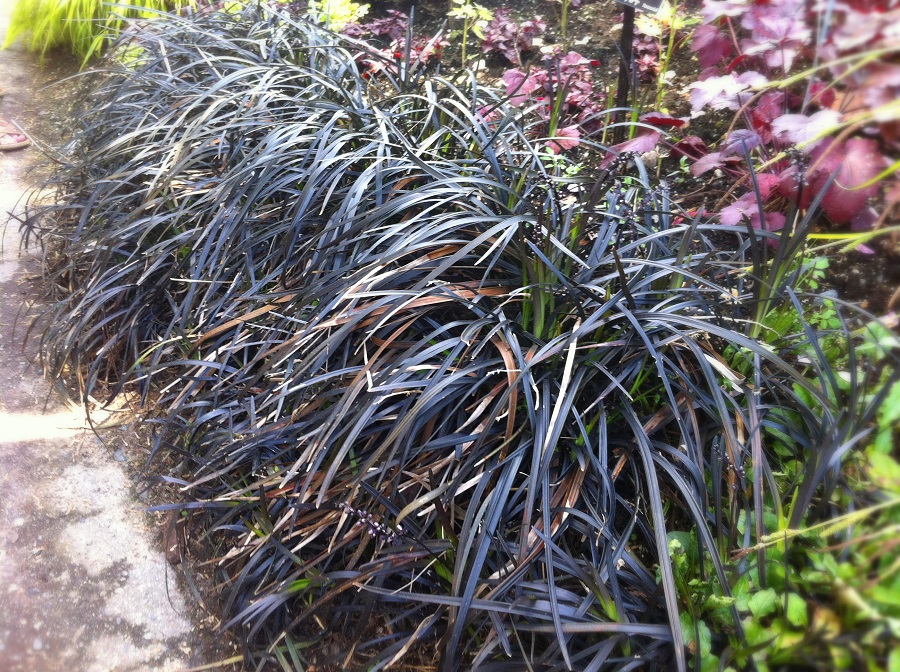
Hierba de Hakone (Hakonechloa macra)
La hierba Hakone se parece a un bambú. Las hojas son bastante estrechas y tienen largas vetas en los bordes. Las matas formadas por esta planta no son altas; suelen alcanzar hasta 30 cm. Esta hierba ornamental es resistente a las bajas temperaturas, aunque cuando éstas bajan, la planta se vuelve ligeramente rosada.
Esta especie se beneficia de un suelo fértil y permeable. El lugar debe ser soleado, aunque la planta puede crecer perfectamente también a la sombra.
Además de plantar esta hierba ornamental en el jardín, también puede ponerla en macetas en el balcón o en el interior. Es una hermosa decoración, y no necesita demasiada atención.
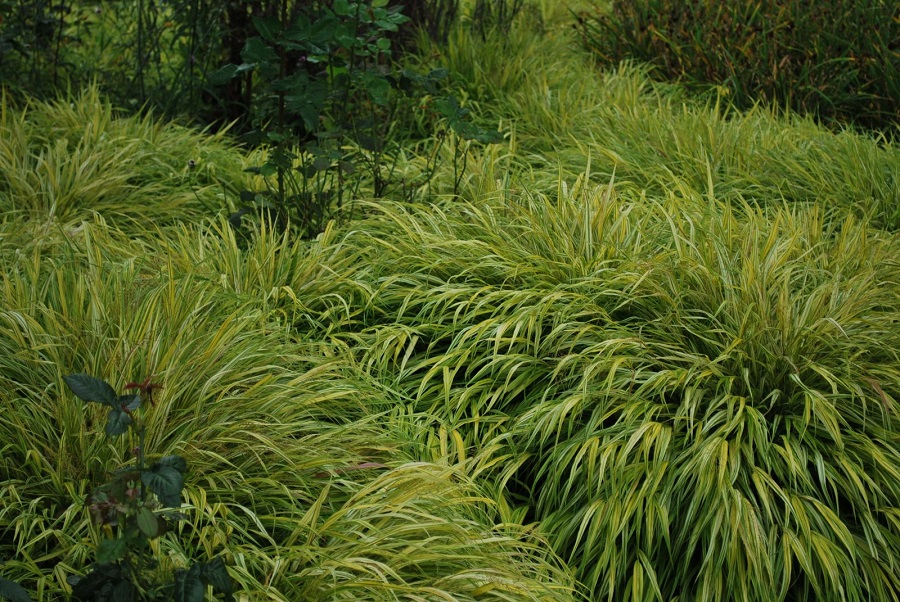
Juncia (Carex)
Los juncos (Carex) son en realidad un grupo de plantas con más de 2000 variedades. Prácticamente cada una de ellas se parece al clásico césped que se cultiva en los jardines. Los tipos más populares son:
- juncia bohemica (Carex bohemica)
- juncia bohemica (Carex bohemica)
- juncia de penacho (Carex cespitosa)
- juncia dioica (Carex dioica)
- juncia alargada (Carex elongata)
- juncia de pantano de pocas semillas (Carex microglochin)
- juncia de pantano boreal (Carex magellanica)
- juncia de pantano de pocas flores (Carex pauciflora)
- juncia remota (Carex remota)
- juncia contigua (Carex spicata)
- juncia amarilla de tallo largo (Carex lepidocarpa)
- juncia de la vejiga (Carex vesicaria)
Las hierbas ornamentales como la juncia prefieren los suelos húmedos, aunque no tienen por qué ser fértiles. El hecho de que el lugar sea soleado o sombreado no es importante, en este caso.
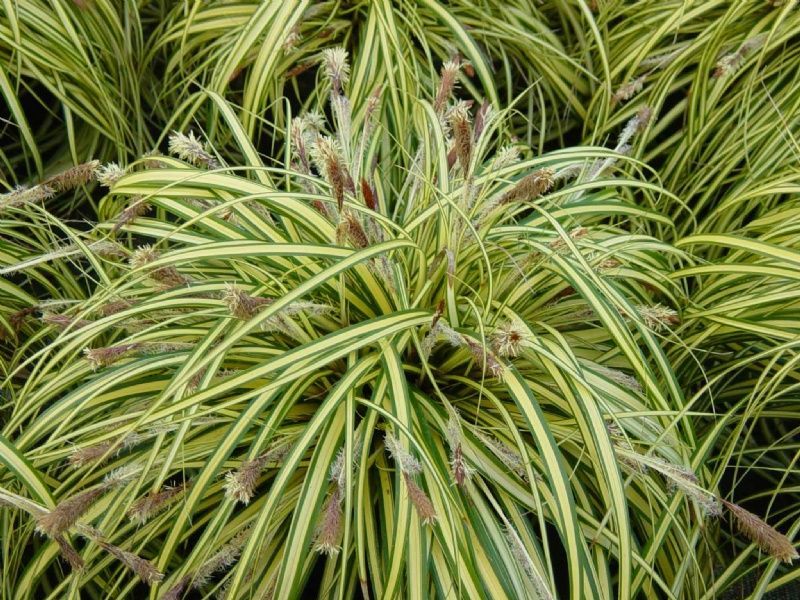
Hierba del páramo (Molinia)
La hierba de los páramos es una hierba ornamental que crece en racimos apretados. Se encuentra a menudo cerca de los bosques de pinos. Hay dos variedades principales de hierba de páramo: la hierba de páramo púrpura, más corta, y la Molinia arundinacea, más alta. Cada una de ellas incluye múltiples subespecies, que miden desde 75 centímetros hasta incluso 2 metros de altura. Las hojas de estas plantas tienen diferentes colores: desde el verde, pasando por el amarillo, el marrón y el morado.
Las hierbas de los páramos crecen bien tanto en suelos ricos en calcio como en suelos ácidos; no tienen necesidades especiales. Sólo hay que asegurarse de que el suelo esté siempre húmedo: esta hierba ornamental crece de forma natural en zonas húmedas y pantanosas. En cuanto al lugar, la planta prefiere zonas soleadas o sombreadas, lo que depende de la variedad.
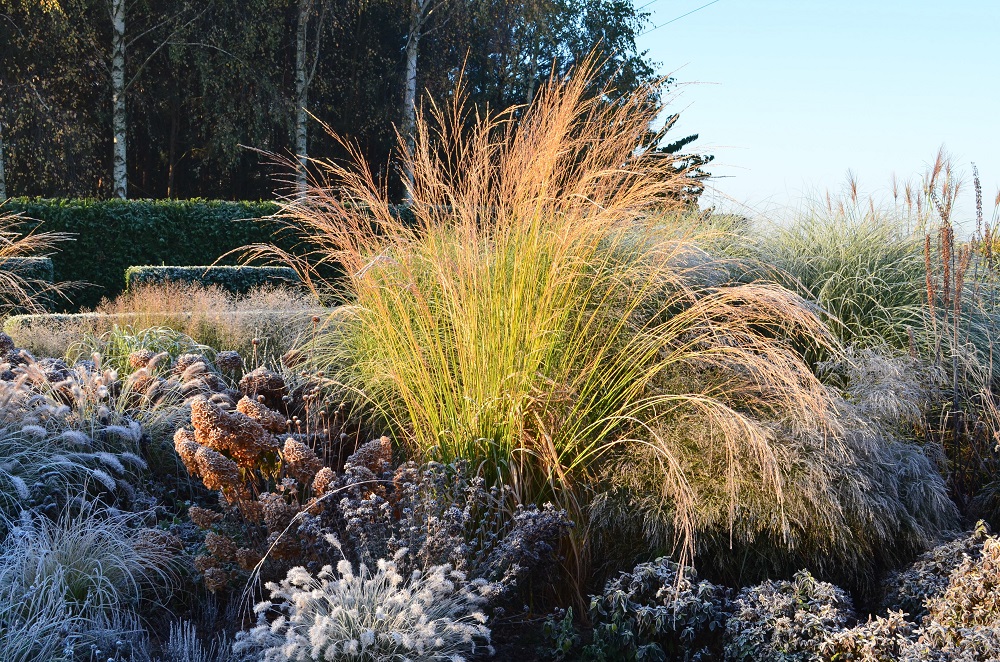
📍 ¿Cómo plantar hierbas ornamentales?
Las hierbas decorativas no deben plantarse demasiado cerca unas de otras, ya que con el tiempo podrían crecer unas sobre otras, lo que alteraría la estética de su jardín. La distancia mínima entre hierbas ornamentales es de 50-60 centímetros.
📍 ¿Cuáles son las mejores hierbas decorativas para la sombra?
La festuca piel de oso y el mondo negro son las mejores hierbas ornamentales que pueden crecer a la sombra. Otras especies buenas son: la hierba hakone, la juncia y la hierba de páramo.
📍 ¿Cuándo plantar hierbas ornamentales?
La época de plantación de las hierbas ornamentales depende sobre todo de los requisitos de la especie. La mayoría de las gramíneas para jardín pueden plantarse en primavera.
📍 ¿Cuándo empiezan a crecer las hierbas ornamentales?
Las hierbas ornamentales suelen empezar a crecer en primavera. Estas plantas se desarrollan completamente en verano. La mayoría de ellas conservan su aspecto también durante el invierno.
Artículos destacados




